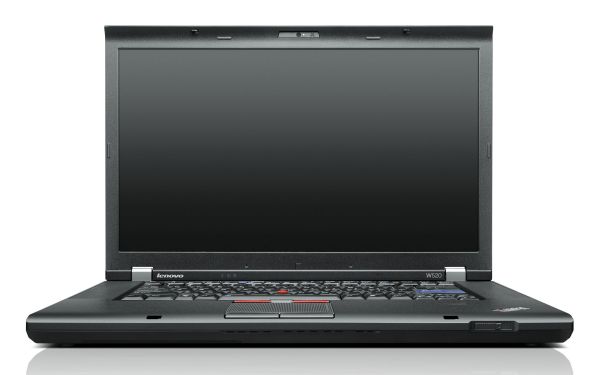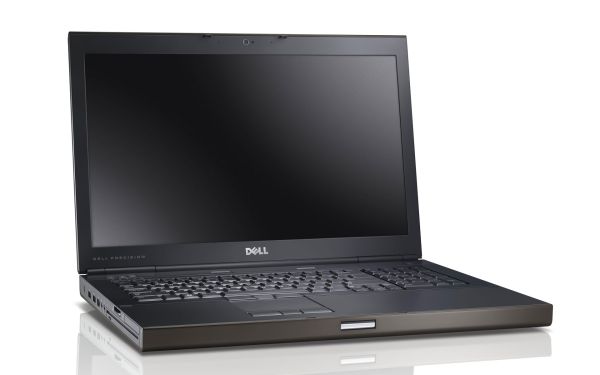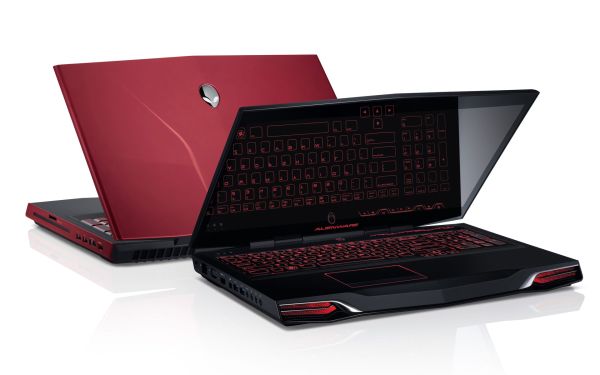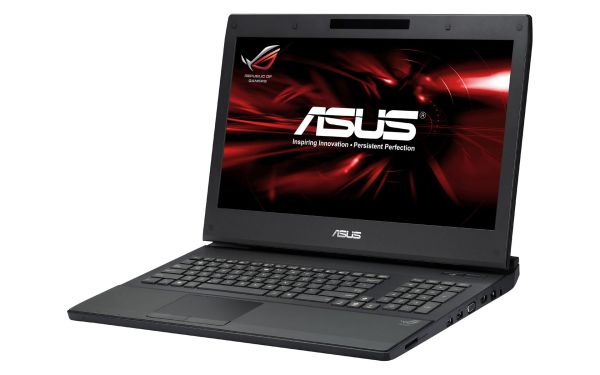Holiday 2011 Laptop Buyer’s Guide
by Jarred Walton on December 2, 2011 3:45 AM ESTGoing for Broke: High-End Laptops and Notebooks
Once we shift pricing to around $2000 and up, we again get a lot of options. There are three primary reasons to go with a high-end (read: expensive) laptop: there’s the no compromise Jack-of-Trades approach, mobile workstations, and no-holds-barred mobile gaming. We’ll take those in turn, though there’s certainly some overlap with the first two.
No Compromises High-End Laptop
A month or so back, one of our readers emailed me asking for advice on what laptop to get. He really wanted it all: battery life, build quality, an excellent display, and even the ability to play games. It’s fine to want it all, but you definitely have to be willing to pay for it. With the display being a major concern—he was very disappointed with most of the laptop displays out there—it narrowed things down a lot. I tossed out the XPS 15 and 15z as possibilities, though their GPUs are a bit underpowered for 1080p gaming. The Alienware M14x also came up, but he felt it was a bit too gaudy. With the Clevo W150HRQ sporting one of the best matte 1080p displays around, we also toyed with that but ultimately ruled it out because of the plastic construction. What was left was a laptop that also fits the next category: mobile workstation (albeit on the lower end of the workstation spectrum).
Built to last, equipped to do (nearly) everything: Lenovo ThinkPad W520 for under $1900
Lenovo’s ThinkPad line has always had a good reputation for build quality, though you’ll generally want to stick with the T-series and W-series to ensure you get the best of what ThinkPad has to offer. The W520 sports the same LCD panel as the Clevo W150HRQ (matte, 95% NTSC color gamut, and about as good as you can get with a TN panel), and it offers up plenty of other upgrades. The base model starts at $1000 and comes with a dual-core CPU, 4GB RAM, 320GB HDD, a Quadro NVS 4200M, and a 1366x768 display—that’s definitely not what we’re after. Grab a bunch of upgrades and you end up with something like this model for $1850.
Lenovo appears to be running some killer sales right now, though, which means you can get additional performance and features and still stay under $2000. We went with the Core i7-2760QM processor, 2x4GB RAM (with two open SO-DIMM slots if you want to upgrade to 16GB), a Quadro 2000M GPU, the 1080p high gamut display, and a built-in colorimeter and with the “TPHOLIDAY” coupon the total still came to under $1900. What’s more, you still get NVIDIA’s Optimus Technology and the large 9-cell battery means you can get upwards of eight hours. The Quadro 2000M is also interesting in that it has the same 192 CUDA cores as the GTX 560M, though at a lower clock and with a 128-bit memory interface; still, it’s enough to handle most games at medium to high detail and 1080p—and if you want to do “real” work, it can handle that as well. It would be great if we could get the W520 with a consumer GPU to save some additional cost, but unfortunately that's not something Lenovo supports; given their focus on business first, it's not too surprising.
Mobile Workstation, Take Two
Okay, the Lenovo ThinkPad W520 certainly qualifies as a mobile workstation, but what if you’re serious about the workstation aspect? Maybe you run some complex CAD/CAM or other scientific software that can benefit from even more GPU performance. In that case, you’re probably looking at Quadro 3000M or higher GPUs, and probably just go for broke with the Quadro 5010M. Sporting a full 384 CUDA cores and a 256-bit memory interface, the Quadro 5010M is the fastest mobile Quadro solution right now. Also, it doesn’t come cheap—not even remotely so. If you want the Quadro 5010M, there are three ways to get there: Dell’s Precision M6600, HP’s EliteBook 8760w, or a Clevo X7200. We’ll just skip the last one, because as potent as the system might be, it’s equally huge and build quality isn’t what we’d want from a $4000+ notebook. So between the Dell M6600 and HP 8760w, which one comes out on top?
For serious work (and serious money): Dell’s Precision M6600 for $4400
We’ve reviewed the HP 8670w, and we’ve tested an earlier version of the M6600 with the Precision M6500; both are clearly targeted at mobile workstation professionals and both have all the support you’d expect for such users. If you’re in the market for such a notebook, there’s a good chance your company is going to decide which one is “best” (because they already have a contract with Dell or HP), but if you have a choice—or if you’re paying out of your own pocket—the Dell Precision M6600 gets the nod for offering basically the same features and performance at a lower price. At the time of writing, you can get the M6600 with an i7-2720QM, 2x4GB RAM, 750GB HDD (or go with a 256GB SSD for $410 more), Quadro 5010M, and a 1080p IPS PremierColor panel for only $4400. Yowza. That includes a $827 instant rebate that Dell is currently running, though, without which the pricing would be a wash. (HP’s 8670w with similar specs currently checks in at $5193.)
Gaming on the Go
Best current gaming laptop: Alienware M17x R3 for $2690
For the mobile gamers who are really serious about gaming, you’ll want the fastest mobile GPU you can find. Sure, you could even go crazy with an SLI or CrossFire notebook, but we’d rather dial it back a bit and remain somewhat sensible. We gave the Alienware M17x R3 a bronze when we reviewed it back in June, and it remains one of the swankiest gaming notebooks around. The starting price of $1500 will get you a quad-core i7-2670QM, 8GB RAM, an HD 6870M, 500GB HDD, and a 900p display. That's actually pretty compelling, and you get switchable graphics (manual Alienware switching with AMD GPUs or NVIDIA Optimus with the green team), so you don't sacrifice battery life—the M17x R3 really does have it all!
Since we're looking at the high-end, though, we'll take the $1900 configuration and upgrade to the GTX 580M for $375 extra, and Alienware also has a $375 upgrade available that will give you a 256GB SSD for your OS and apps with a 750GB 7200RPM HDD for mass storage—just the way we like it. (If you’d rather stick with AMD GPUs, the HD 6990M is $75 less than the GTX 580M.) While we’re upgrading the graphics and other areas, go ahead and throw in the Killer Wireless-N 1103 for $40; it’s a healthy upgrade from Intel’s 2x1 MIMO Wireless-N 1000 and our experience with the 1102 shows that it actually can improve your wireless networking (and gaming) experience.
Good gaming for under two grand: ASUS G74SX for $1939
If spending $2500 or more seems a bit more for a gaming laptop, you can stick with the base setup of the M17x R3, or you might prefer ASUS’ G74SX as an alternative. Like the M17x R3, we gave it a bronze award for offering a nicely balanced gaming notebook, and we did like the fact that ASUS offers an SSD + HDD setup with the G74SX-DH72. The GTX 560M isn’t quite as snappy as the GTX 580M, but it’s enough to run most games (including Skyrim, Battlefield 3, and Batman: Arkham City) at high quality settings and 1080p. We’ll be updating our mobile gaming benchmark suite shortly and will include the G74SX results as a reference point.














88 Comments
View All Comments
Vxheous - Saturday, December 3, 2011 - link
Yeah, I think the gimped ASUS G74 is the BBK7 model, the 560M has a lower bus, and it's also not 1920x1080. The model I got (XC-1) has the regular 560M with 3GB of vram, and has the 1920x1080. There's a G74SX-RH71 floating around now at $1400 Cdn, that has the i7 2670QM instead of the 2630QM that was in the original release G74'sWineohe - Friday, December 2, 2011 - link
I've had the X220 for about 6 months now. IPS Display is great, i7 is very fast, and upgrades in the form of 8GB of ram and a 240GB SSD have made it even better. However I would challenge any mention of high build quality. The bezel on both the keyboard and around the LCD Panel have definite issues. The corners are separating even though I have added the extra protection of a Neoprene case, something I didn't do with my Dell M1210, it was nearly indestructible.snuuggles - Friday, December 2, 2011 - link
Jarred, did you attempt to actually *use* the ux31? The keyboard is completely useless (action too short and resistant causing missed keystrokes. This has been reported quite consistently from reviewers, though they still give it high marks, god knows why). This is a very serious issue that I'm pretty surprised you didn't even mention it.Recommending it to readers here is not a service--I expect better from this site.
JarredWalton - Saturday, December 3, 2011 - link
I've used it some and don't really mind the keyboard. It's not the best keyboard ever, sure, but it's better than some of the keyboards I've used over the years and a 13" keyboard is worlds better than the 11.6" and 10.1" netbook keyboards. To each his own; I'll have the full review in the next week or so.snuuggles - Friday, December 9, 2011 - link
Well, it's true I haven't used a *ton* of notebooks, so I guess the UX31 keyboard could be "relatively good." But the keyboard is the single biggest differentiator of this class of notebook with a tablet computer. It's simply unacceptible to have the primary input mechanism be so unreliable. My user experience was that the key action cause me to miss letters in *multiple words per sentence.* Also, the bottom left of the return key would depress and "click" but not register a keypress. This was repeatible--pressing that part of the key did nothing--ever!This is a mechanically flawed device, something that is unfixible in drivers or with anything else besides a complete re-think of the design.
Seriously Jarred, touch-type a couple of paragraphs *without* going back to correct missed keys and examine what you've written.
I'm *very* interested in your review, it's possible I got a "bum" keyboard, but given the other reviews I've seen, I suspect not.
JarredWalton - Friday, December 9, 2011 - link
I haven't had issues with missed keys, though I'll agree the key travel is lacking. The power button location is far more irritating to me (already disabled it, thanks). It's possible you just had a flaky unit, but I'll try typing a couple pages of the review on the UX31E just to verify there's nothing particularly damning.g39 - Friday, December 2, 2011 - link
Good guide, saved me a lot of work. I'm a former PC user, now Mac user, looking to buy a gaming PC laptop after being out of the scene for a few years. One thing that would be handy in this article is a comparison table listing the prices/specs of the all laptops mentioned in this article. Any way nice article, looks like the Asus G53SX-XR1 fits my needs.ashwinn - Friday, December 2, 2011 - link
Thanks so much for such a neat classification and budgeting of the wide array of available choices. This is the best laptop guide I have seen this year. Thanks for taking the time to pick nice photos of the laptops, non-Apple gadgets are typically shown with bad photos, though they do not look that bad at all :-)Bolas - Saturday, December 3, 2011 - link
Well this is sweet... I just bought the laptop that anandtech recommended for high end gaming about a month ago and at half price (go go outlet center + coupon).refurbished Alienware m17x r3, 120Hz Nvidia 3D Vision, Nvidia GTX 580m gpu, Intel core i7 2820QM cpu, 16GB 1333MHz DDR3, Blu-Ray, Killer 1103 Wireless N, all for only $1661. And then installed an Intel 160GB X25-M G2 SSD for the boot drive (had one from a desktop build) and a 750GB HDD for the data drive.
Lots of fun!
Supermuncher - Saturday, December 3, 2011 - link
I think it's awesome you happend to mention the 4430s since I literally just bought one. The price/performance ratio is amazing. Right now you can actually get the updated 2330 with 500gb for $500. The matte screen is also a plus with usb3.0 and esata. The only annoying this is all the crapware preinstalled and also the fan which is audible all the time! It's not super noisy but it is always on. Even turning it off in bios does nothing to quinch the ever present noise of it.